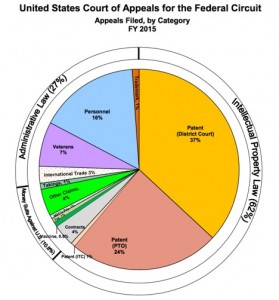People seem to find it interesting to look back at the confirmation hearings of the Federal Circuit judges. Judge Dyk’s testimony at his confirmation hearing is listed below. I edited out most of the answers of the others testifying that day; but, some of their answers were left in for context. I thought this comment about being a “jobist” was particularly interesting:
_______________________________________
Senator Durbin. Thank you for your answers on that. There is one other element that I always like to reflect on, as a former practicing attorney before a lot of judges, and that is the fact that when you are confirmed, and I hope that you all are soon, you will have a lifetime appointment, and that sometimes leads to a great feeling of independence, as it should. That is the nature of the judiciary. And it sometimes leads to a change in temperament, because folks are not really going to be held accountable as elected officials might be.
If you could each address briefly this issue of judicial temperament and give me your idea of what is required of you if you attain this position, I would appreciate it. Judge Scott, if you would start.
…
Senator DURBIN. Thank you. Mr. Dyk, you kind of started at the top here, according to your resume, your first assignment as a clerk in the U.S. Supreme Court to three Justices, including the Chief Justice, so you have seen judicial temperament at many different levels. What are your thoughts about it when you are confirmed?
Mr. Dyk. Well, that first experience helped humble me. Senator Durbin, and I completely agree with you. I think it is very, very important for a judge to remember that he or she is a civil servant. That is exactly what judges are. They have a job, just like the postman. The postman delivers the mail. Judges decide cases that come before them. I think if you lose sight of that, you really do not belong on the bench. I think it is absolutely essential to be as courteous as possible to everyone, to remember that you have a job to do, to be a jobist, in Justice Holmes’ words, and to do the best you possibly can at all times and to have people who will keep you humble. I am sure my little league team will help with that.
_______________________________________
TESTIMONY OF TIMOTHY B. DYK, OF THE DISTRICT OF COLUMBIA, TO BE U.S. CIRCUIT JUDGE FOR THE FEDERAL CIRCUIT
Mr. Dyk. Thank you. Senator. I would like to first thank the committee for giving me a hearing. I appreciate that very much, and just briefly, I would like to say that I regret that my father, Walter Dyk, is not here today. He died a number of years ago and it would have been a privilege to have him. I would like to thank my family and my colleagues from Jones Day and my colleagues for coming here today and I will spare the committee further introductions.
QUESTIONING BY SENATOR DEWINE
Mr. Dyk, let me start with you, if I could. In a 1994 Federalist Society roundtable discussion entitled, “Do We Have a Conservative Supreme Court,” do you recall making statements about Justice Scalia’s plain meaning approach to interpreting laws as being conservative, but a more expansive analysis as being moderate? In your response, you also stated that, “The notion is that Congress speaks only through the words of the statute and that this is a mechanical approach.” You further explain that, “A Senator or a Congressman is much more likely to read the committee report than 559 the legislation itself, so the committee report could actually be more reliable than the words of the statute.” I wonder if you would be so kind as to elaborate on this response.
Mr. Dyk. Surely, Senator. I do recall the statement, and obviously, as a subordinate Federal judge, I would follow the Supreme Court’s direction to rely on the plain language primarily. I do agree with that completely. At the same time, I think sometimes cases get into a bit of a dueling dictionary, and under those circumstances, I think it is appropriate often to look at the central purpose of the legislation, as the Supreme Court did, for example, this last term in the Moscarello case involving the question of whether carrying a firearm would include carrying a firearm in the vehicle, and after reviewing the dictionaries and press statements, the Court finally concluded that, yes, it did encompass carrying the firearm in the vehicle because the purpose of the statute was to require the criminal to leave his gun at home.
So I do think that statutory purpose and background do have a role to play as to legislative history, but I certainly agree that the primary meaning of the statute is to be gleaned from the plain language that Congress uses.
(more…)
